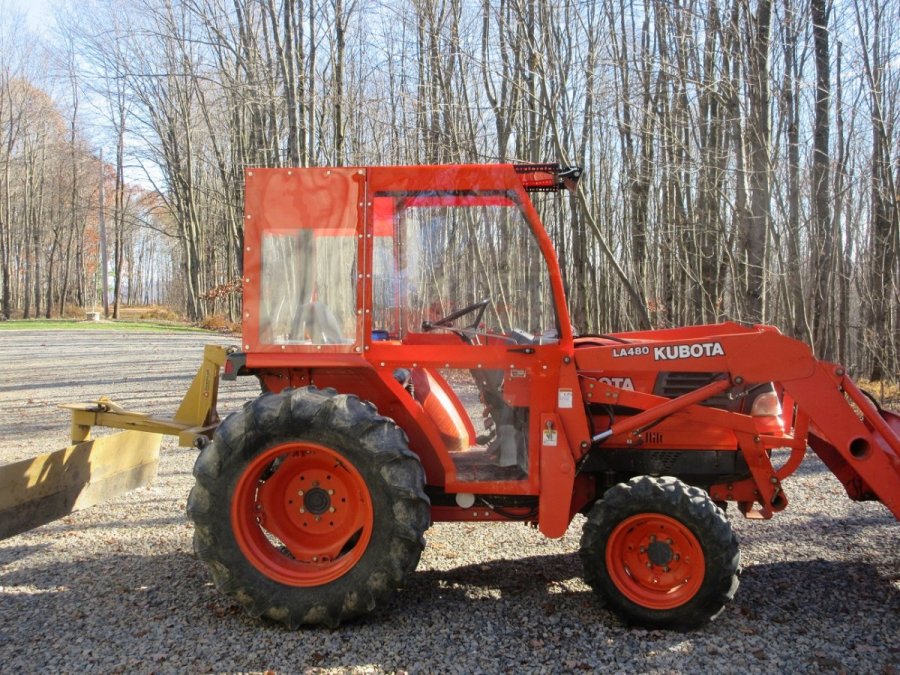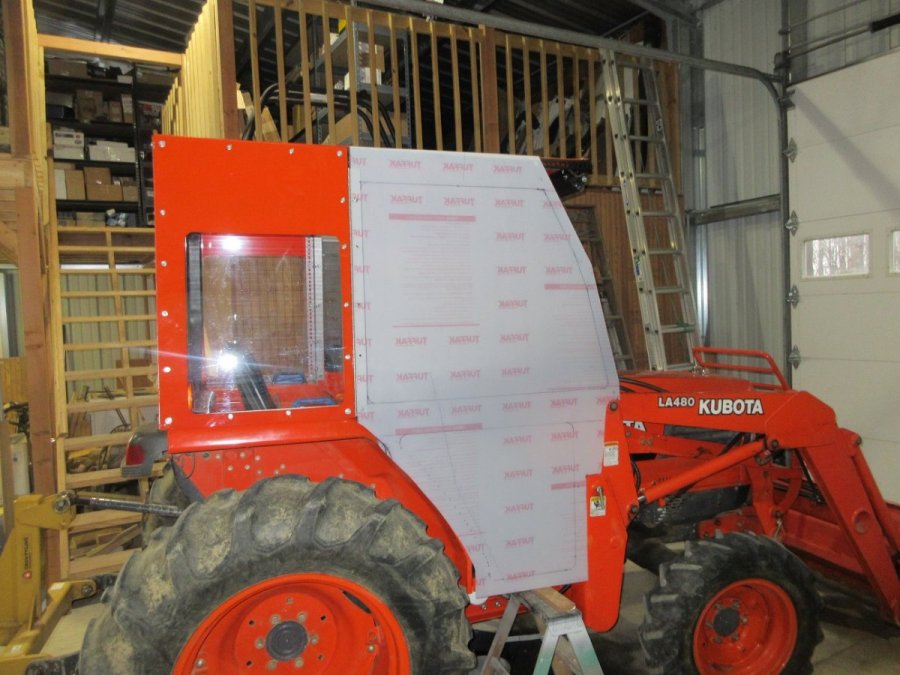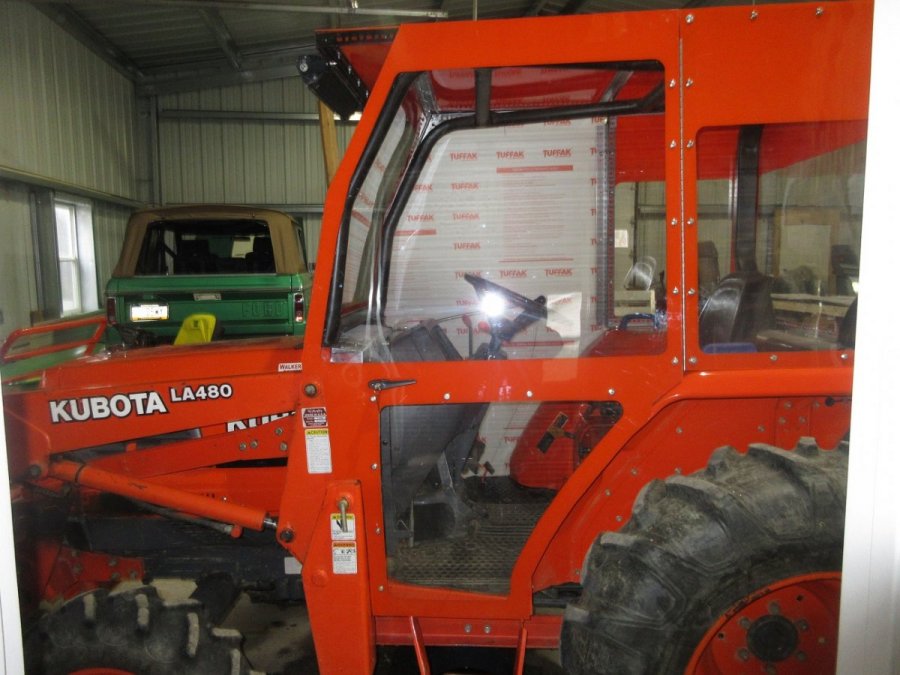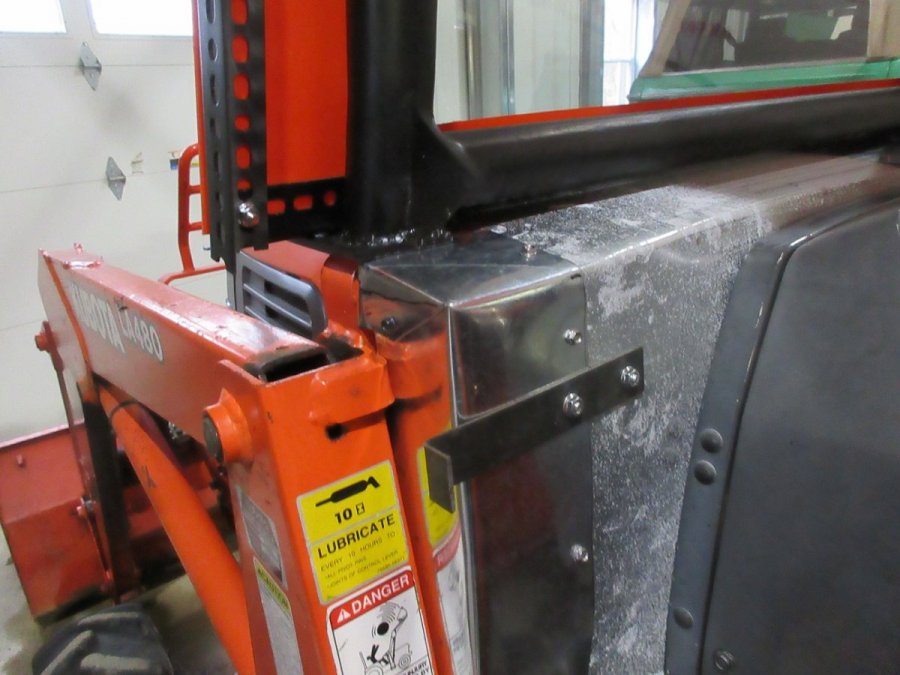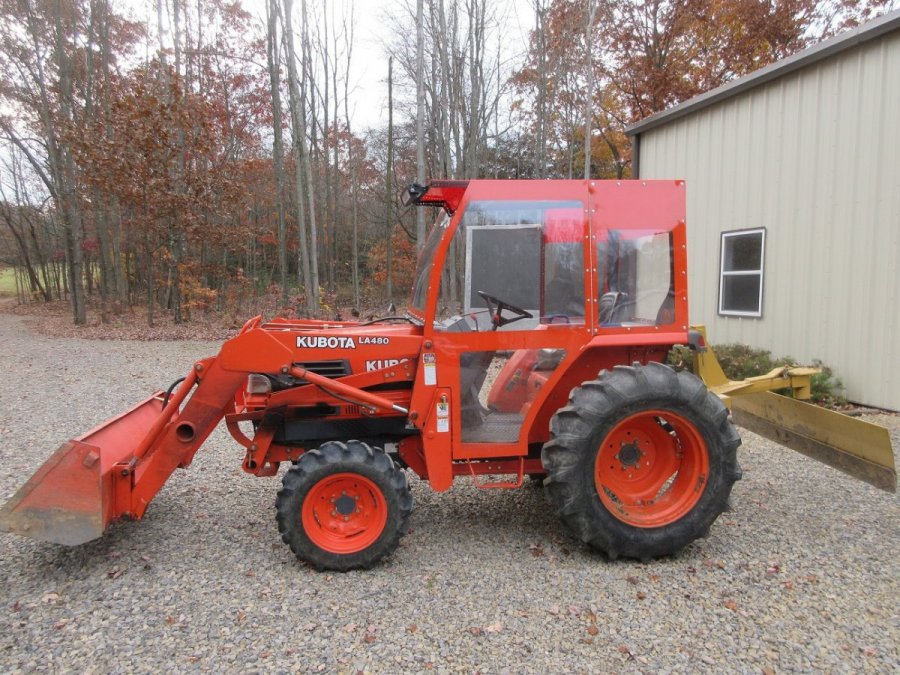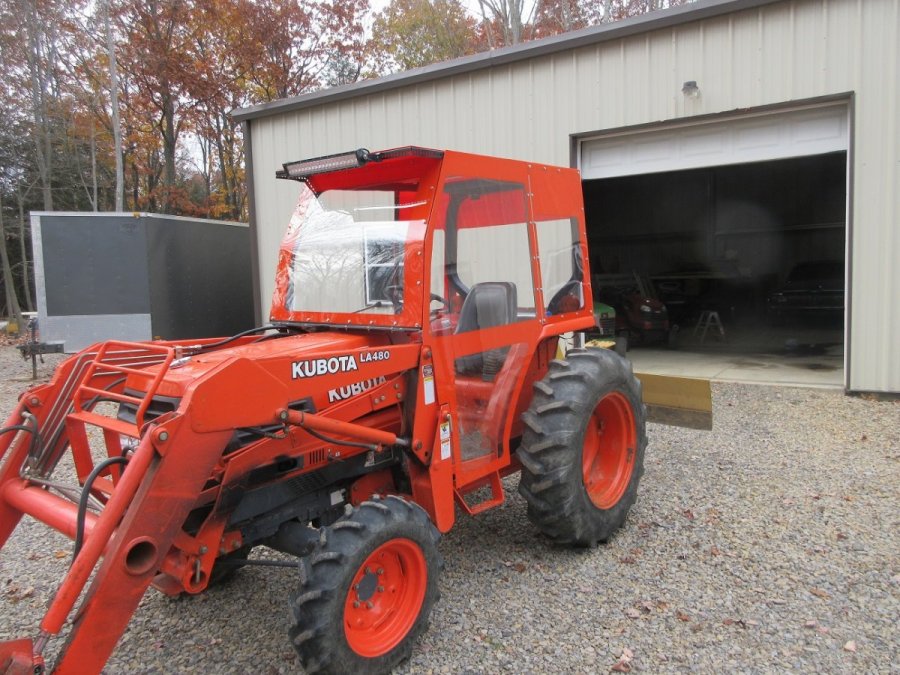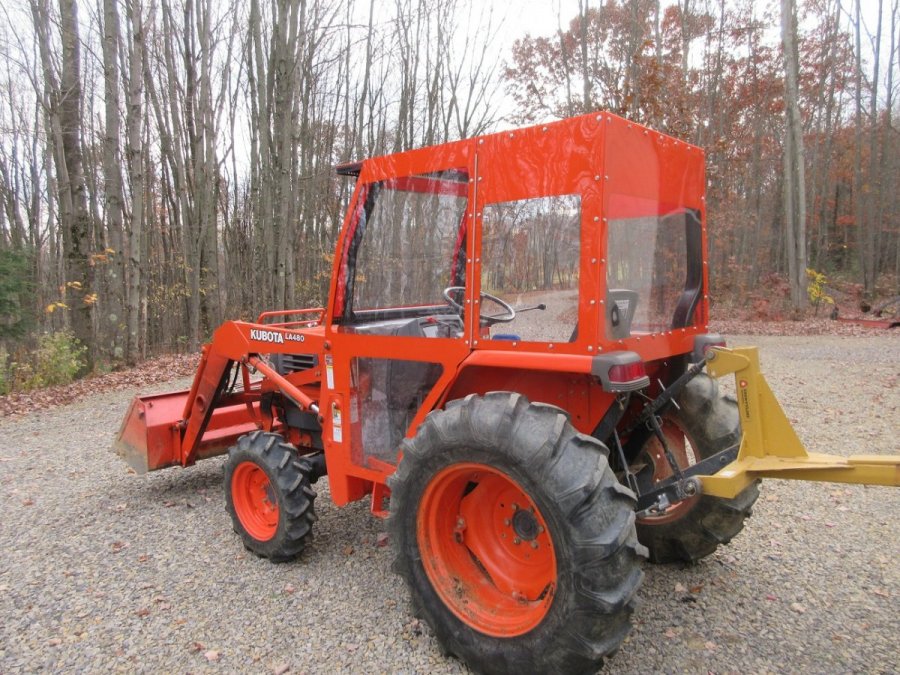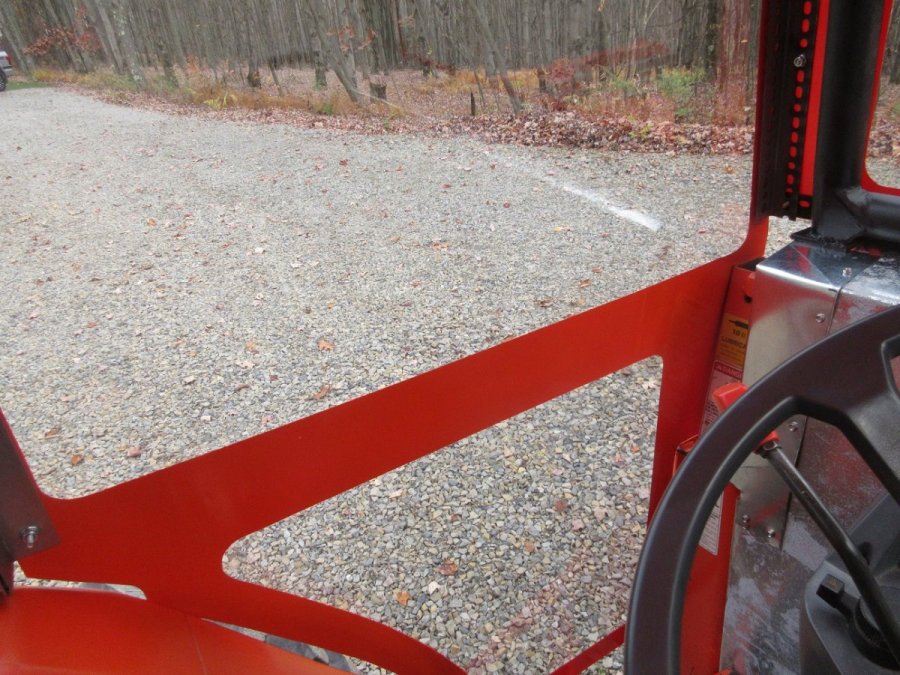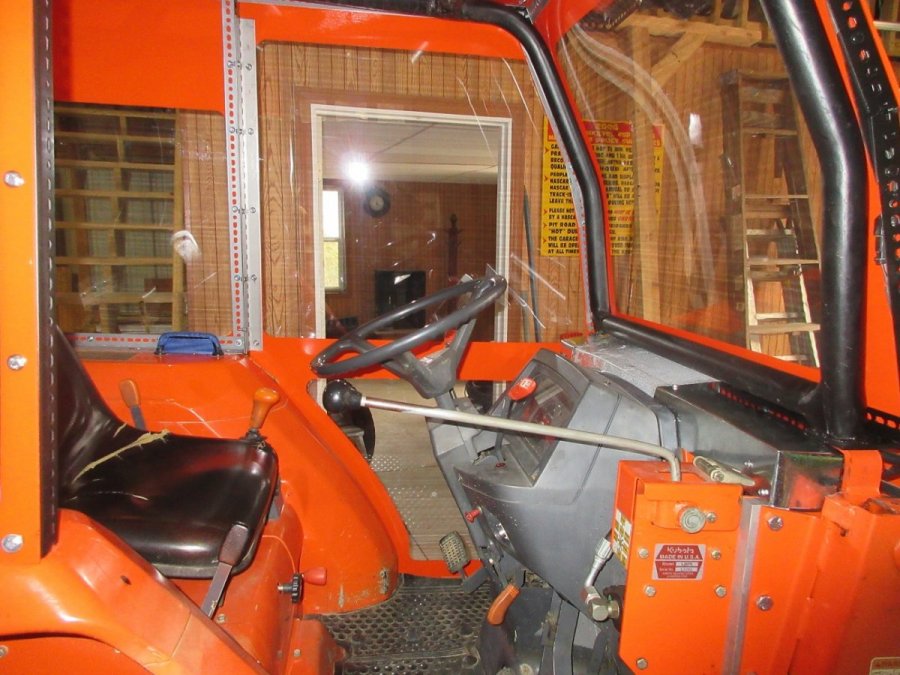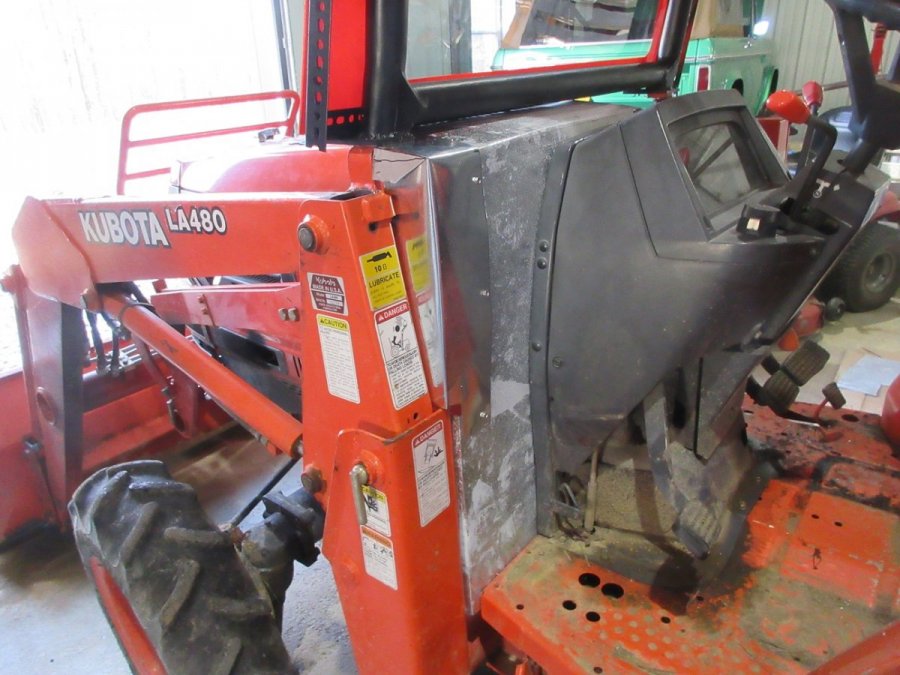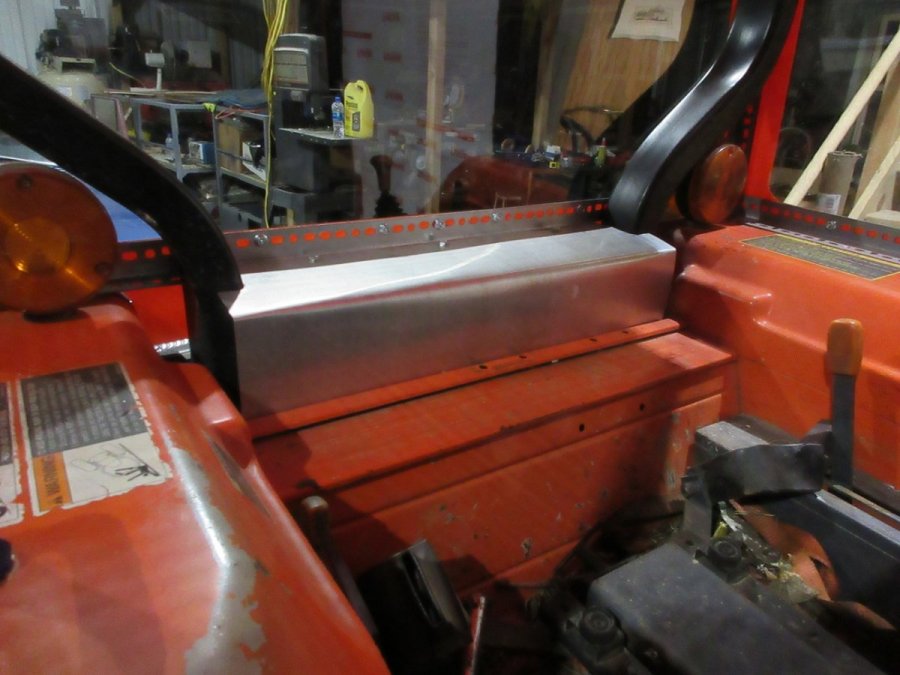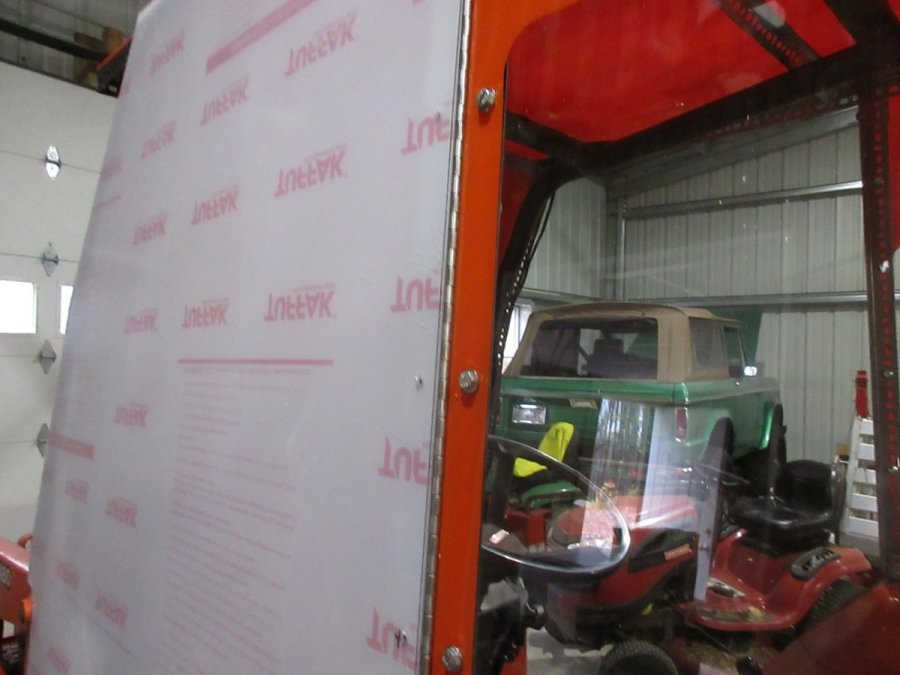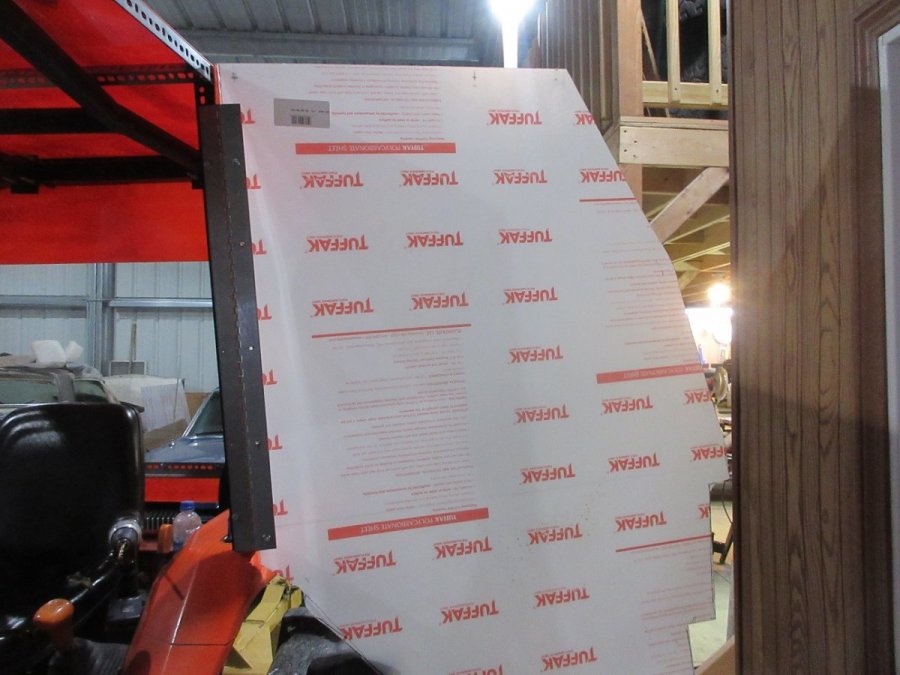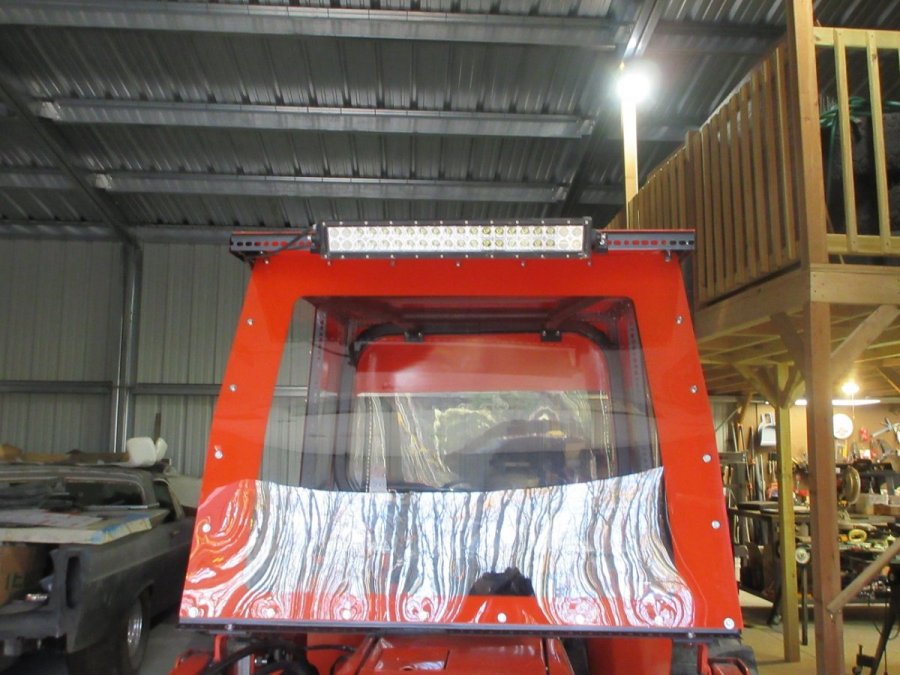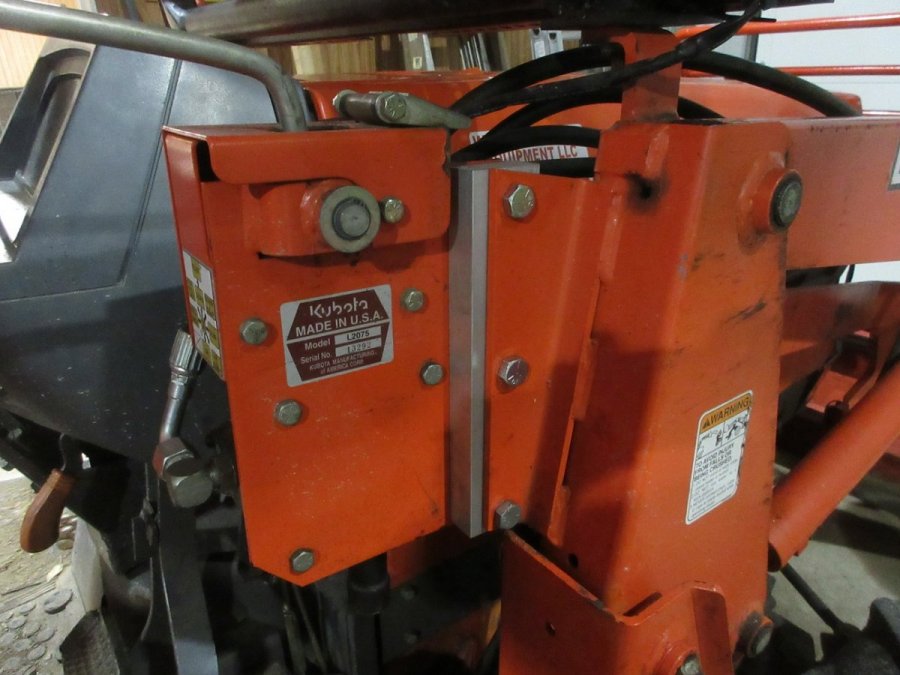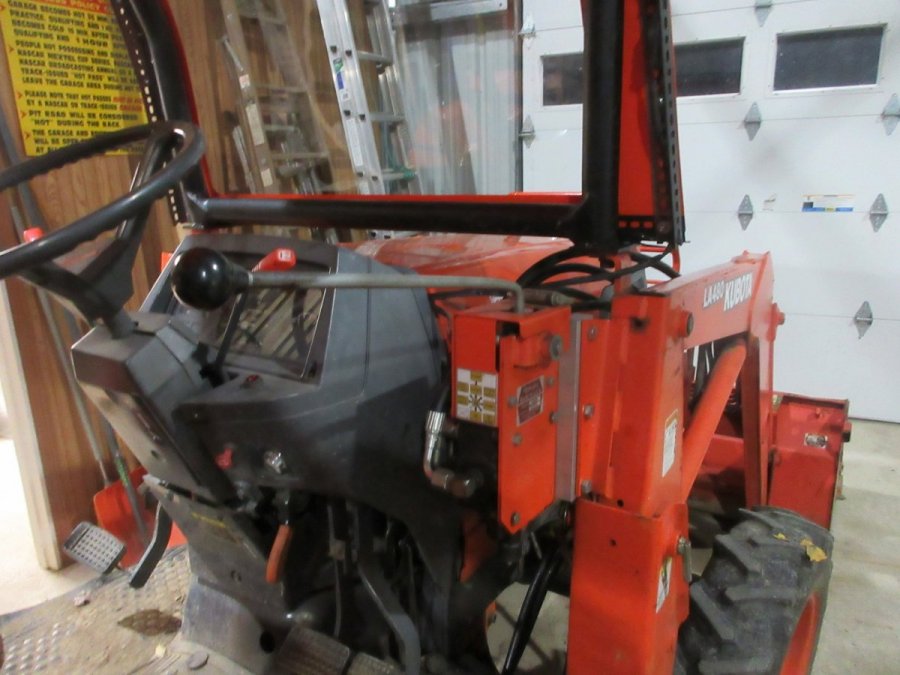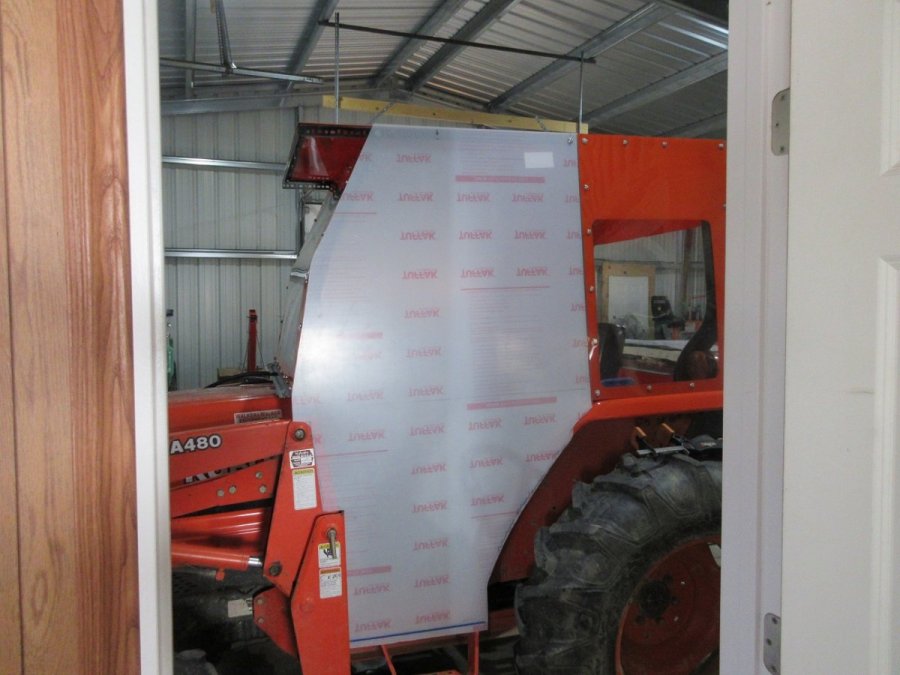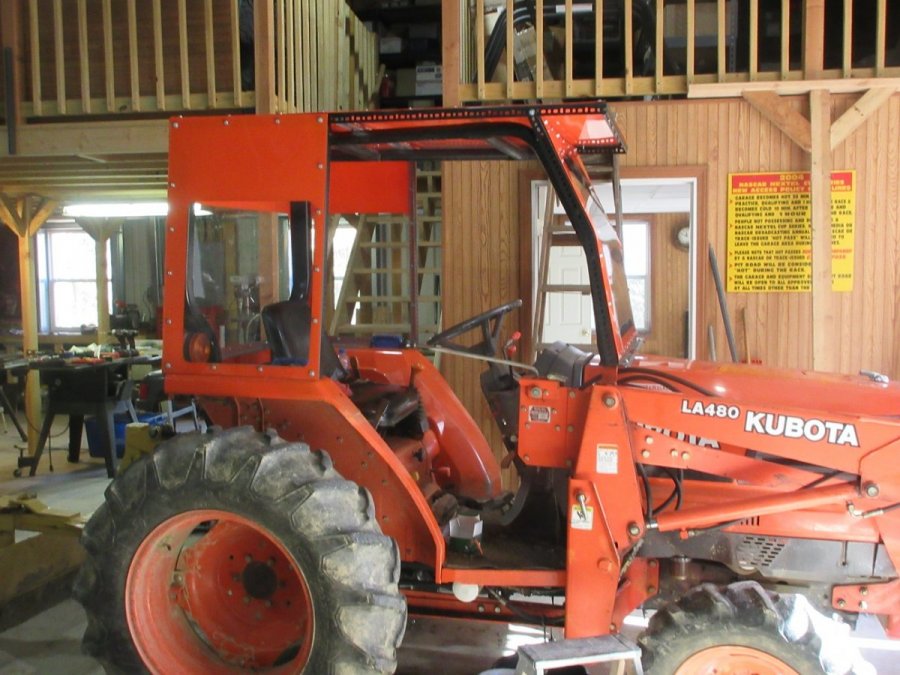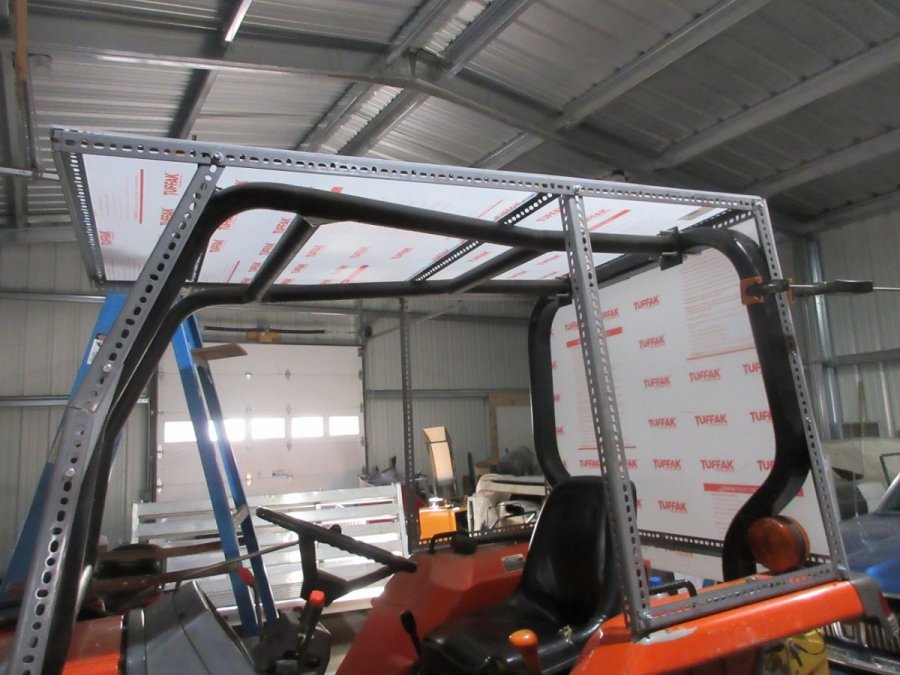-
Posts
2,611 -
Joined
-
Last visited
-
Days Won
15
Content Type
Profiles
Forums
Gallery
Downloads
Store
Everything posted by blksn8k2
-
-
Got the other door cut out and it will soon be ready for paint. I also added the latch mechanism and some internal bracing to the left side door. The latch is pretty basic. It's made for a shed door and came with an internal lock and keys. It should be fairly obvious by now that some of this stuff like the latch wasn't really planned out which means I'm sorta figuring it out as I go. When I ordered it I wasn't even sure it would work much less how to mount it. It will be a few days before the sound deadener that I ordered gets here and I needed to get some of this other stuff done before adding that anyway.
-
-
Here's some of the sheet metal I'm adding below the windshield and behind the seat to close off the larger gaps. I also removed the rubber floor mat and after I pressure wash and paint everything I plan to add Dynamat sound deadening on the floor as well as on the new sheet metal panels. The floor mat will then go back in.
-
Got the piano hinges today. They are 3" wide in the open position and 32" long and made from 304 stainless with a .120" diameter pin. Still waiting on the door latches. Once I get those and have the left side door fitting the way I want I can mask it off and paint the boundaries similar to all of the other panels. Then I can do the right side door. At some point I might try adding some weather stripping around the edges of the door openings. Not a top priority yet. I also started making the sheet metal closure plates for the areas below the bottom of the cab. I'm making those from scrap pieces of galvanized steel left over from an earlier central AC duct project for the house.
-
Since I'm kinda at a standstill on the doors until I get the piano hinges and latches I ordered for them I decided to use the time to add the LED light bar on the roof frame above the windshield and the switch to operate it on the dash. The tractor has headlights but they aren't particularly effective especially considering the fact that they are mounted in the grille and can be totally blocked depending on the position of the loader bucket. I also fabricated and installed a 1" thick aluminum spacer block between the loader control valve and the loader frame. The control valve handle has to move from side to side when using the tilt feature on the loader bucket. Tilting the bucket forward requires moving the handle all the way to the right. Without that 1" spacer the handle was going to hit the new cab door on that side.
-
Excellent idea on the sound deadening fordmantpw and thanks tbone. I cut the first door out today. Looks like my plan to put the hinges at the rear will work. I was concerned that there might be too much offset in the rear tires but the door will clear the tire when swung open, but just barely.
-
Thanks! Seeing as how the top speed is maybe 5 mph when plowing and 15 max I'm hoping between the roof extension and Rain-X that it won't be much of a problem. Like most people, I generally wait until the storm is over before I start plowing anyway. Plus the doors will be hinged at the rear (suicide style) so reaching out there won't be impossible. ? Come to think of it, there are quite a few Amish families in the area so maybe I can check out what they use on their winter buggies, besides the horse's tail. "Lord, I apologize for that one there, and please be with all the starving Pigmies down there in New Guinea! Amen!" Larry The Cable Guy The one thing I was a little surprised by was how much of an echo chamber the cab creates even without any doors. That diesel rattle is really magnified in there. Looks like I'll be wearing ear muffs anyway. ? Seriously though, I was planning to close off the area below the windshield and beside the engine covers with sheet metal panels so besides keeping the wind and exhaust fumes out maybe that will also cut down on some of the engine noise.
-
I finally decided to add a cab on my Kubota tractor. Getting tired of dealing with nasty winter weather when plowing my lane. I did look at pre-fab'd canopies and soft cab enclosures that drape over a canopy but decided to build my own. Not only were those pre-fab'd parts too expensive but they also would not fit over the rollcage I added several years ago. Instead I bought three 4x8 sheets of clear .118" thick shatterproof polycarbonate, several 1-1/2" x 1-1/2" x 6 ft long perforated steel angles and a crap load of 1/4-20 nuts, washers and bolts. I haven't made the doors yet but everything else is painted and installed. Speaking of paint, I decided because the plastic sheets are clear that it might make more sense to paint the inside surface rather than the outside. This is a work vehicle and I have been known to drive under low hanging tree limbs while brush hogging around the edges of fields and I didn't want those tree limbs to scrape all that pretty orange paint off. BTW, the paint is there mostly to provide shade in the summertime which also explains why I extended it down so far on the side and rear panels. I'll probably add a 12V heater and I have an LED light bar that I plan to add above the windshield. I was a little concerned about putting a bend in the middle of the windshield but it is surprisingly distortion free as you can see in the photo I took from the driver's seat. The front section of the rollcage was made from discarded 2" tubing that was originally part of a cage I bought for my Bronco. It already had bends where it fit behind the Bronco windshield and I decided to make the cab for the tractor fit the same contour. The tractor came from the factory with the rear hoop (ROPS bar), I just added to it. I also included an extension of the roof panel over the windshield to try and keep at least some of the crap from the weather off and also to provide a little extra shade. The frame for that will also serve as a mounting surface for the light bar. I don't plan on taking it to Bonneville so I'm perry sure the aerodynamics will be fine. ?
-
We need to be careful not to over complicate the reasons why one engine will produce more low rpm torque than another of similar displacement. Again, go back to the old 427 and 428 FE big blocks. They were essentially the same displacement yet the 428 produced more torque at lower rpms than the 427. If you compare the street version of the 427, which was the medium riser, to a 428 CJ you will see that they essentially used the same cylinder heads, intake manifold and carb. Other than the camshaft profiles the biggest differences between the two were bore diameter and crankshaft stroke. I know that might be an oversimplification because the racing versions of the 427 did have a bunch of other parts that allowed them to achieve and survive much higher rpms. But back to the basics: The 427 used a 4.23" bore and a 3.78" stroke. The 428 used a 4.13" bore and a 3.98" stroke. The biggest reason why the 428 could produce more low rpm torque was because it had the mechanical advantage of the longer crankshaft stroke. It's like comparing a 3" long screwdriver to a 30" long crow bar. You can move a lot more mass with the longer lever arm of the crow bar with a lot less effort. It's the same thing with a 4-stroke engine. When the piston is on it's downward power stroke the longer the "arm" of the crankshaft the easier it is to turn the crankshaft so it takes less effort to create more twisting force, or torque, at slower speeds. The 427, on the other hand, could achieve the same rpm at a much quicker rate and could take better advantage of more air and fuel to achieve higher rpms because the shorter lever arm (stroke) of it's crankshaft could make the crankshaft turn at a faster rate in less time. It just took more effort at slower engine speeds which meant that it couldn't produce as much torque at those slower speeds. Now, you can certainly do a lot of things with induction systems, camshaft designs, ignition and valve timing, exhaust systems, etc. but you still need that basic mechanical advantage of the longer lever arm. How does all that apply to the 6.8? I'm betting it will be a little snappier than the 7.3 and be damned impressive with a set of 3.73 or 4.10 gears. Just don't expect it to pull as heavy loads without a little more effort, or in this case, a little more rpms.
-
The 6.2 used a 3.74" stroke.
-
Another possible advantage of using the same bore size is that if the valve sizes, placement and angle had been optimized for the 4.22" bore none of that would need to be changed for the 6.8. In other words, the 7.3 cylinder heads could potentially be used without any adjustments for a smaller bore.
-
And the larger bore of the gen 3/4 was made possible by the switch to PTWA cylinder coating in lieu of steel liners. I believe I read in some of the coverage of the 2024 Mustang that the Mustang's version of the Coyote was adopting the "bottom end" of the truck version meaning the crankcase design. They were touting the switch to a steel oil pan. I assume that also includes the belt driven oil pump but they didn't actually say that. The old crank driven oil pump design was the weak link, especially when adding forced induction. The "fix" was to replace the cast factory pump gears and housing with aftermarket billet parts. When the 2021 F-150's 5.0L was introduced the Ford engineers made a point of the fact that the new belt driven pump had been tested to withstand up to 1000 hp output.
-
No offense but... no kidding. The point I was trying to make is that if you look at the overall design of not only the LS but also the GM SB2 NASCAR cup engine they look more like evolutions of Ford engines than they do the small block Chevy. Especially the cylinder head design. If anything, the SB2 is probably more similar to the Ford Cleveland head design but that has more to do with current NASCAR engine rules for cylinder head valve angles, etc.
-
That was me. But as others have pointed out, the 6.8 actually uses a slightly shorter stroke than even the 6.2 Boss did (3.68" vs 3.74"). One of the things that I wondered about with the 6.2 crank was that with it being a SOHC designed if there was some special machining on the snout of the crank to accommodate the mounting of sprockets to run the camshaft for each cylinder head. That would obviously be unnecessary for a pushrod design like the Godzilla. So, if the crank couldn't be used as is without extra machining, then why not optimize the stroke for the 6.8L application? I suppose it's even possible that they are still using the same raw forging as the 6.2 but altering the machining to suit the 6.8.
-
True, but it's not far from being Ford SB Windsor based....
-
I suppose it's possible that the 6.8 is set up for a future switch to DI or, more likely, a dual injection design similar to what is currently used on all F-150 engines. For 2023 that is apparently not necessary yet. However, the "bowl" pistons would seem more conducive to a forced induction setup rather than DI. One of the benefits of DI is that it allows for a higher compression ratio due to the cooling effect of spraying fuel directly into the combustion chamber. As witness, the gen III Coyote has a 12:1 CR.
-
Here's a little known fact from NASCAR history. Back in the late 60's NASCAR wanted to reduce the displacement of the engines so they came up with a power to weight formula which allowed teams to run a lighter car based on the reduced output of its engine. Ford's response to this new rule was to destroke their 427 FE racing engines by using the forged crankshaft from the 361 cu in truck engine. The resulting 396 was a result of using the 427's 4.23" bore and the 361's 3.5" stroke. That engine would scream to over 8000 rpm and won a lot of races in the lighter Fairlane chassis.
-
I assume that was the TFL Truck video in which the Ford engineer also mentioned that customers will really like the quick revving characteristics of the new 6.8. That is at least partially due to the big bore/short stroke design.
-
Perhaps the 6.8 becomes the only gas option in F-250, F-350 and E-series and the 7.3 is used only for F-450 and up?
-
I was at this event on 9/10/22. It was held at Beaver Springs Dragway in central PA. All of these cars are powered by FE big blocks, mostly 427s and 428 CJs. One of the most impressive was the black falcon which made one pass of 8.55 sec @ an on the brakes 132 mph in the 1/4 mile. Who would have thought one of those old motors could do that? Enjoy the sounds of real Ford Power! Edit: The Falcon also ran an 8.20 @ 153... real
-
Just to be clear, by using the 6.2 crank in the 7.3 block you get 6.8L without changing the 7.3's bore size which also means no change to piston size. The displacement formula for an engine is Area of the Bore (πr²) x Crankshaft Stroke x Number of Cylinders. So, for an engine having a 4.22" bore (7.3L block) and 3.74" stroke (6.2L crank), the calc would be (4.22"÷2)² x π x 3.74" x 8 = 418.48 cu in or 6.858L. And just to show my age, the old adage that a big bore/short stroke engine was always considered to be a quicker revving engine that made peak power at a higher rpm compared to a small bore/long stroke engine and this was best illustrated when comparing a 427 FE (big bore/short stroke) to a 428 FE (small bore/long stroke). The 427 was a better race engine when compared to a 428 which was actually a better street engine due to it's lower rpm torque output.
-
I see this more along the lines of the old 385 series big blocks. The 429 and 460 shared the same bore size but used different crankshaft stroke dimensions. I also don't think we can dismiss the fact that the 6.2L Boss uses the same bore spacing and main bearing journal sizes as the 7.3L Godzilla. It would seem to be almost too easy to say you could simply use the 6.2 crank in a 7.3 block. BTW, that does result in 6.8L of displacement assuming you do not change the bore diameter of the 7.3 block. The only argument against a 6.8L in that configuration might be that big bore/short stroke engines have historically not been the best way to produce good low rpm torque which is what you would probably prefer for a truck application.
-
Still wondering if this is as simple as using the 6.2L crankshaft in the 7.3L block? They share the same bore spacing and main bearing journal size. Using the 7.3's bore size of 4.220" and the 6.2's stroke of 3.74" = 418 cu in or 6.8L. This would make for a quick revving engine similar to the old 429 ci big block.
-
No I do not and I doubt they run anything other than some type of SBC or LS based spec engine.



